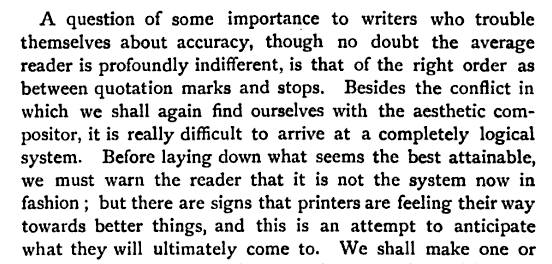Grammar Girl 语法女孩(2011年) Quotation Marks with Periods and Commas(August 25, 2011)
Episode 289: August 25, 2011
SPONSOR: GoToMeeting makes it easy to collaborate online with anyone anywhere. Try it Free!
Today, as promised, we’ll talk about how to mix quotation marks with other punctuation.
Quotation Marks with Commas and Periods
The most common question people ask is whether periods and commas go inside or outside a closing quotation mark, and there’s a reason everyone is confused. The rules in American English are different from the rules in British English, so if you’re regularly reading American and British publications, such as the BBC and CNN websites, you’ll regularly see it done different ways.
In America, we use a hard-and-fast rule that was supposedly designed by compositors to protect the tiny commas and periods (1, 2). We always put periods and commas inside quotation marks.
In Britain, they use rules that require the writer to determine whether the period or comma belong with the quotation or are part of the larger sentence. It appears that early champions of this logical system were H.W. Fowler and F.G. Fowler who wrote the classic 1906 British usage guide The King’s English (3). In it, the brothers note that they are in conflict with compositors, but believe theirs is a better system.

In short, my U.S.-centric memory trick is to remember that inside the U.S., periods and commas go inside quotation marks.
Squiggly said, “I hate packing for a vacation.”
“I hate packing for a vacation,” said the yellow snail.
Quotation Marks with Exclamation Points and Question Marks
When combining exclamation points and question marks with quotation marks, however, Americans follow the same logical system as the British. Where you place the other marks relative to the quotation mark depends on the context of the quotation.
If the whole sentence, including the quotation, is a question or an exclamation, then the question mark or exclamation point goes outside the closing quotation mark; but if only the part inside the quotation marks is a question or exclamation, then the question mark or exclamation point goes inside the closing quotation mark. Examples will help.
In this sentence, the whole thing is a question, so the question mark goes after the closing quotation mark:
Did she ask you whether you enjoyed Aardvark’s song “Ode to Ants”?
However, in this sentence only the part in quotation marks is a question, so the question mark goes inside the closing quotation mark:
I love Aardvark’s song “Where Have All the Ants Gone?”
The same rules apply for exclamation points.
Quotation Marks with Semicolons and Colons
With semicolons, colons, asterisks, and dashes, we get back to a simple rule. They always go outside the closing quotation mark.
I love “Ode to Ants”; it’s insightful and moving.
“Ode to “Ants”: A Moving and Insightful Song
Aardvark’s greatest hit is “Ode to Ants.”*
I love “Ode to Ants”--it’s insightful and moving.
Summary
In American English, periods and commas always go inside the closing quotation mark; semicolons, colons, asterisks, and dashes always go outside the closing quotation mark; and question marks and exclamation points require that you analyze the sentence and make a decision based on context.
搜 索
- 频道推荐
- |
- 全站推荐
- 推荐下载
- 网站推荐




















